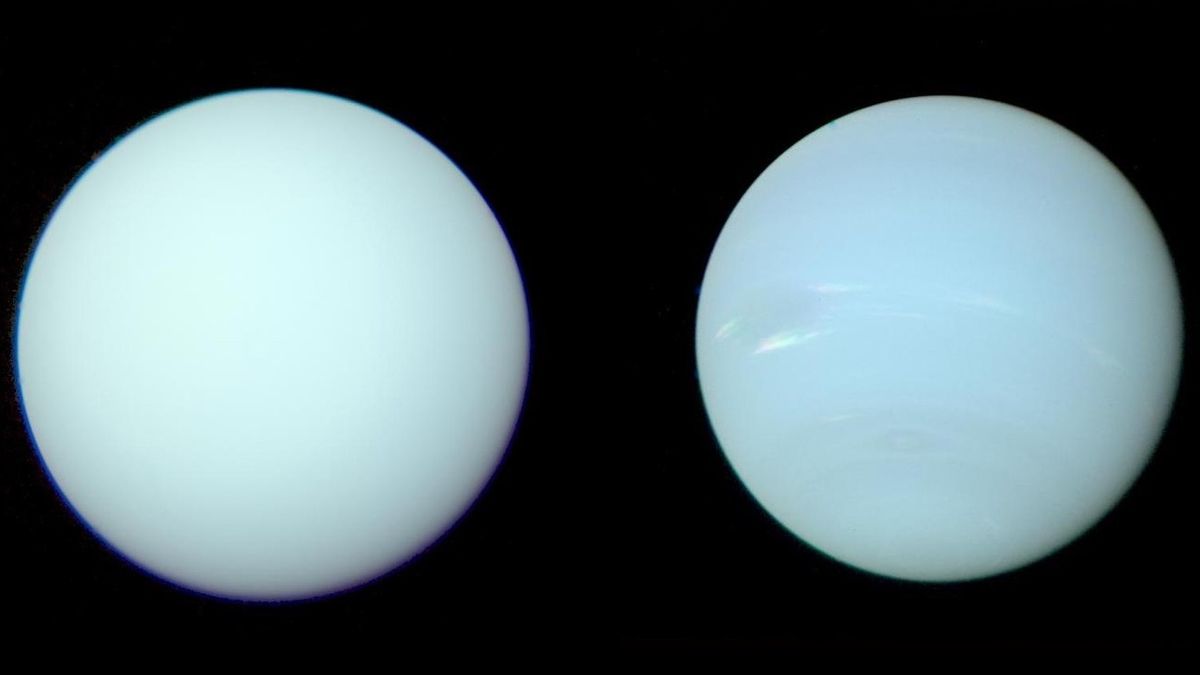In the depths of our solar system — a realm where chemistry meets speculation — scientists have reported the possible existence of a molecule known as aquodiium, an elusive cousin of the ammonium ion. If true, that could explain oddities in Neptune and Uranus’ magnetic fields.
This is a big deal because stable aquodiium, which consists of four atoms of hydrogen and one atom of oxygen (H4O2+), has never been observed before due to the high energy barrier involved in adding a second proton to the molecule hydronium (H3O+), which is how aquodiium must be formed. Hydronium, however, is a bit easier to create. It forms through the fundamental process of adding a proton to water. The jump from hydronium to aquodiium is the hard part.
However, with the help of advanced computer models, researchers have pinpointed a potential habitat for aquodiium: the extreme pressures found in the cores of ice giants Uranus and Neptune. And, importantly, its presence in this intense, icy environment may help explain the planets’ unusual magnetic fields — weirdly, they’re both highly tilted relative to their axis of rotation and significantly offset from the planets’ centers.
Could aquodiium be to blame?
Peculiar chemistry for peculiar worlds
Due to having a similar size and mass, the cores of Neptune and Uranus are almost identical. Both have rocky cores like Jupiter and Saturn, but unlike their larger neighbors, their internal pressures are not sufficient to convert molecular hydrogen into an electrically conducting liquid metal. Instead, a large mantle of icy water and ammonia forms about 12,427 miles (20,000 kilometers) below these worlds’ surfaces.
This is where things get interesting: the study’s authors suggest the planets’ unusual magnetic fields could be generated by ions acting as charge carriers. Ions are atoms or molecules with a net electrical charge resulting from the loss or gain of one or more electrons. These ions pertaining to Uranus and Neptune’s magnetic fields don’t have to exist solely as standalone protons but could also include hydronium, ammonium — and aquodiium.
In chemistry, a molecule typically exists in its lowest energy form, known as the ground state. This is because nature tends to follow the path of least resistance, and the ground state minimizes factors such as bond strain, meaning atoms within the molecule are connected at less-than-ideal angles, and electrostatic repulsion, where charged atoms or groups within the molecule repel one another. The challenge with forming aquodiium (H4O2+) lies in the increased electrostatic repulsion and strain that occur when adding a second proton to the hydronium ion — it’s like trying to bring together two positively charged magnets.
When a proton is added to water to form hydronium, those two factors are more easily overcome; the resulting molecule has a positive charge localized on only one of the oxygen atoms, with the hydrogen atoms arranged in a stable geometry around the oxygen atom in the center. To go from this situation to aquodiium, you’d need to adding a second proton to the structure — but that would increase the amount of positive charge in the molecule, leading to significant electrostatic repulsion between both the positively charged protons and disrupting the hydronium’s existing molecular structure, creating strain.
Under normal conditions, these factors don’t allow stable aquodiium to form. The only way it’d be possible would be if enough energy were present in the reaction to force the molecule to come together anyway, amid all the strain, repulsion, and other complications not even discussed. We don’t have that kind of energy on Earth. However, under the extreme conditions in Uranus and Neptune, there may indeed be enough energy.
The scientists reported that aquodiium appeared as a plausible outcome in their simulations specifically because the very high pressures found in these worlds encourages the bonding of oxygen and hydrogen ions such that aquodiium can be stabilized. And if stable aquodiium lurks in these planets, well, we may finally be on the road to decoding where they get their odd magnetic fields.
The study was published in May in the journal Physical Review B.






